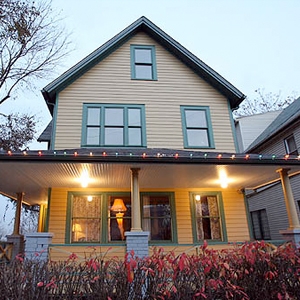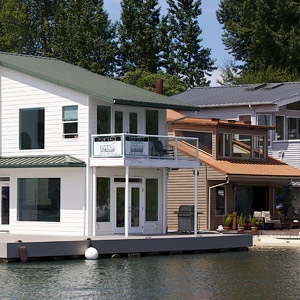Floating Home Log Floats
 One type of floating home foundation would be a log and stringer float. These floats support and stabilize the floating home. They have a life of about 40 years, but they can be repaired and updated throughout the life of your home to extend their life. The repairs can include replacing or adding new logs, replacing one or all of the stringers, adding boyancy floatation in the form of bails of foam.
One type of floating home foundation would be a log and stringer float. These floats support and stabilize the floating home. They have a life of about 40 years, but they can be repaired and updated throughout the life of your home to extend their life. The repairs can include replacing or adding new logs, replacing one or all of the stringers, adding boyancy floatation in the form of bails of foam.
When you buy a floating home, with all the hopes and possibilities attached to your purchase, you will want to have your float inspected by a floating home inspector who can rate the float of your new home and give you an evaluation that will allow the home and float to be used as collateral for a mortgage. On pitfall that buyers and sellers are experiencing today is that the building codes have changed since 2008. A float that may have gotten a positive rating in 2008 may no longer be constructed in a way that is ‘financable’. This means that the float will require some updating to pass the current codes. The updating can include adding floor insulation, increasing the number of stringers, adding a log or two and other expensive but important repairs.
 The message here is clear. The purchase of your new floating home needs to be subject to a float inspection, and the buyer’s approval of that inspection. If you are paying cash, you still need to know what it is you are buying. If you ever want to sell, you will be responsible for assuring the next buyer that they have a solid float. When it comes to doing the repairs, get two or three bids from contractors who understand floating home construction and know how to bring a serviceable float up to current code expectations. Depending on the extent of the refurbishment, the cost can be up to $70,000……Yes! more than a new float! The work is dangerous and requires the use of several different contractors who specialize in the various aspects of the repair.
The message here is clear. The purchase of your new floating home needs to be subject to a float inspection, and the buyer’s approval of that inspection. If you are paying cash, you still need to know what it is you are buying. If you ever want to sell, you will be responsible for assuring the next buyer that they have a solid float. When it comes to doing the repairs, get two or three bids from contractors who understand floating home construction and know how to bring a serviceable float up to current code expectations. Depending on the extent of the refurbishment, the cost can be up to $70,000……Yes! more than a new float! The work is dangerous and requires the use of several different contractors who specialize in the various aspects of the repair.
Cover image courtesy of MarketingGoon.com








